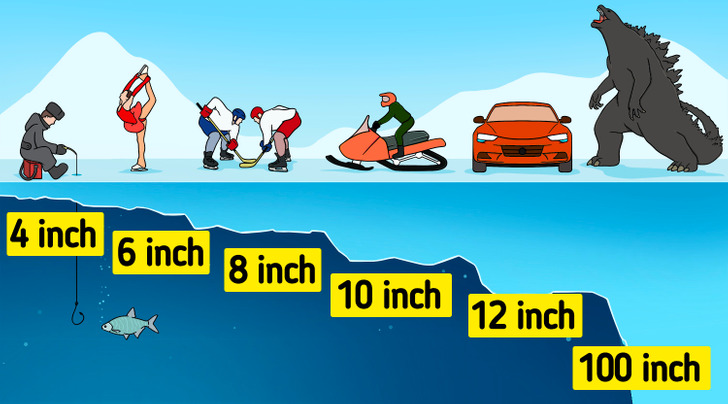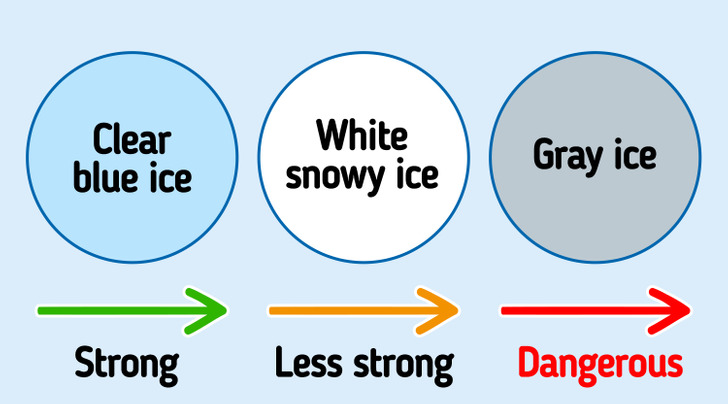How to Know When Ice Is Safe
Every year, people get in dangerous situations when they fall under thin ice. It happens to experienced fishermen, people that love ice skating, drivers that need to get over a river or a lake, and curious people that love walking on frozen ponds.
5-Minute Crafts is going to tell you about the things you need to know before stepping on the ice.
Ice thickness that’s safe for people

Many things depend on other factors, but there are recommendations that give a ballpark of a minimum safe thickness of ice, depending on what a person is doing on it.
- From 4 inches if a person is fishing
- From 6 inches if a person is walking or ice skating alone
- From 8 inches if there’s a group of people ice skating or playing hockey
- From 10 inches to travel on a snowmobile
- From 8 to 12 inches to drive a light car or a small SUV
- If the ice is thicker than 100 inches, it can hold the gigantic weight of Godzilla. This is the average thickness of ice in the Arctic where there are huge scientific stations.
Why ice thickness is not the only factor to consider
There are many other important factors many people forget about, like the following:
- The water depth and size of the body of water
- Currents, tides, and other similar factors affect the direction and power of moving water. This is true for closed bodies of water, like lakes and ponds, that might get water from a spring under the water that will make the ice thin and weak.
- Chemicals, including salt
- Fluctuations in water levels
- Logs, rocks, and docks that absorb heat from the sun and conduct it to the water, making the ice less solid
- Changing air temperature
- Shock waves from vehicles traveling on the ice
Which ice is stronger — new or old?
New ice is stronger than old ice: 4 inches of new ice can hold a person, but 1 foot of old thawed ice may break. Additionally, ice doesn’t freeze uniformly — some parts of the pond may be stronger and others, weaker.
What ice color indicates

The color of the ice may be an indicator of how much weight it can carry.
- Clear, blue ice can hold maximum weight.
- White, non-transparent ice is 2 times less strong: it forms when wet snow freezes on the icy surface.
- Gray ice warns you of danger: the shades of gray mean there’s water in the ice, and it’s not strong at all.